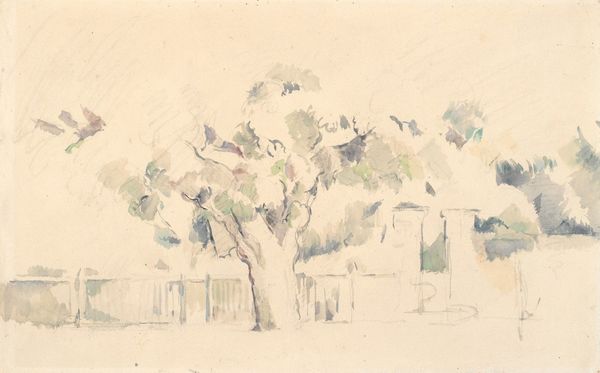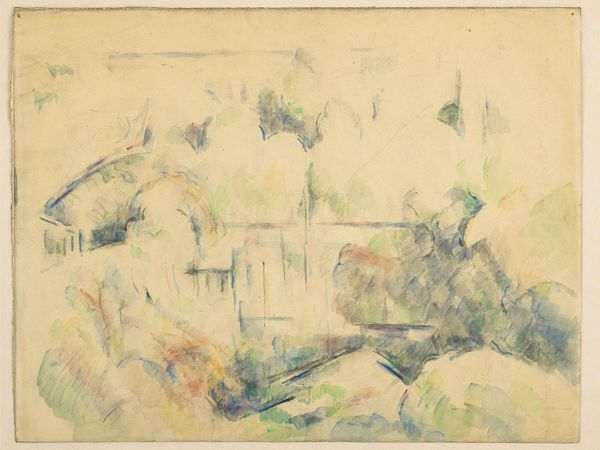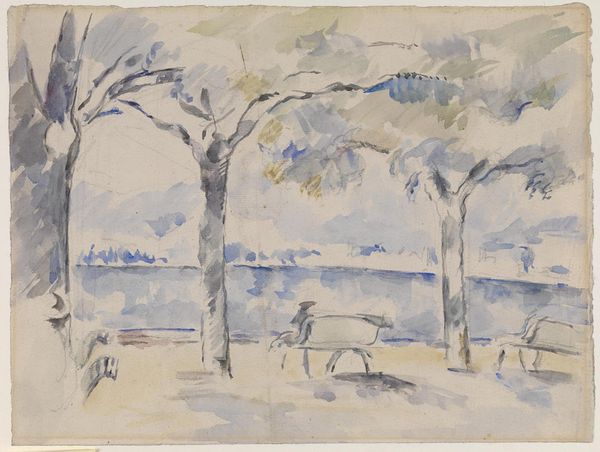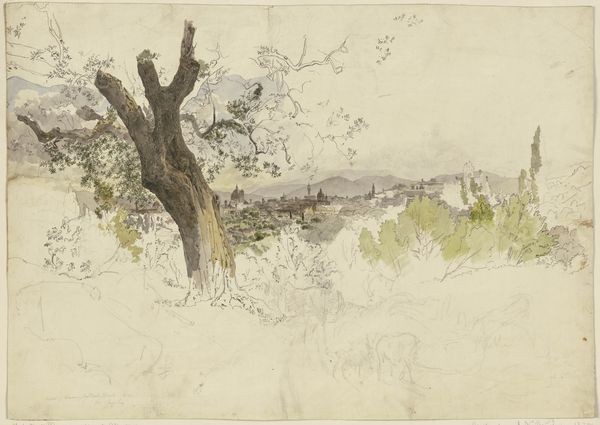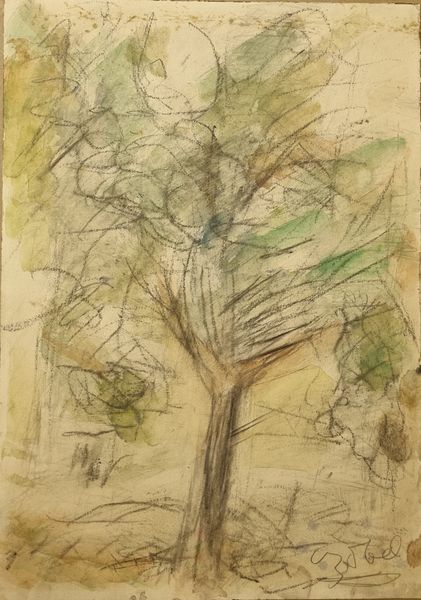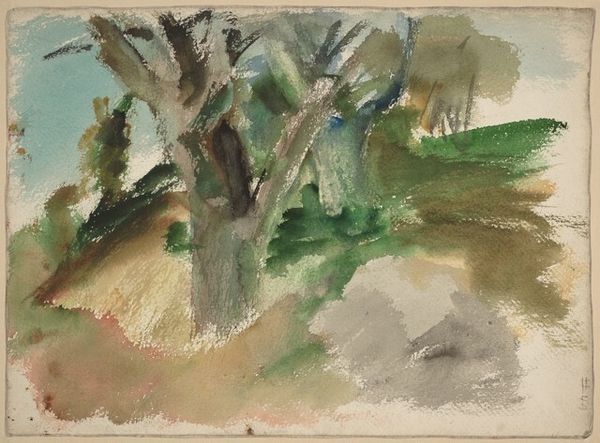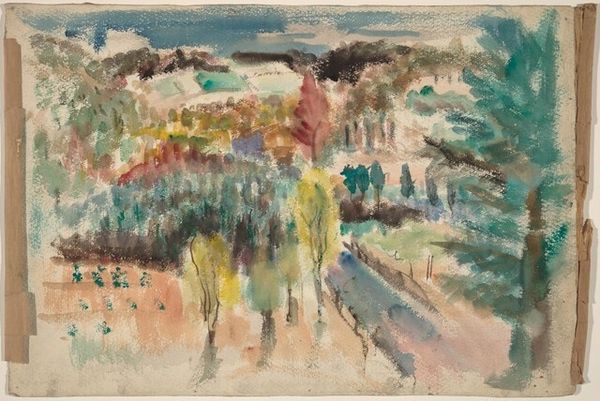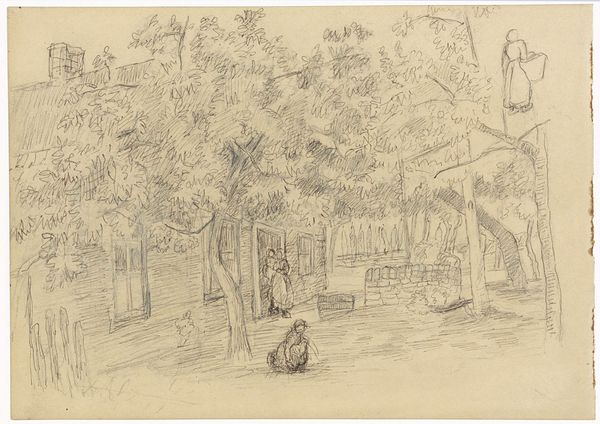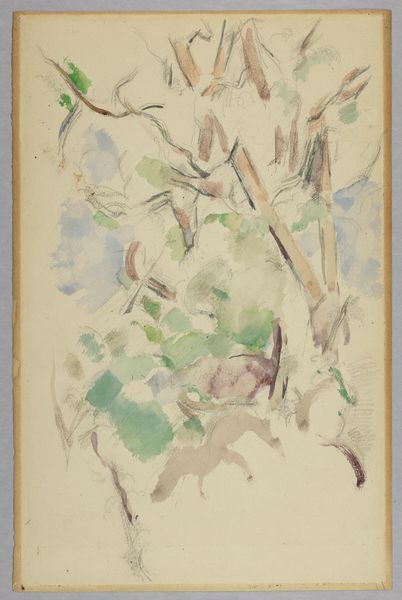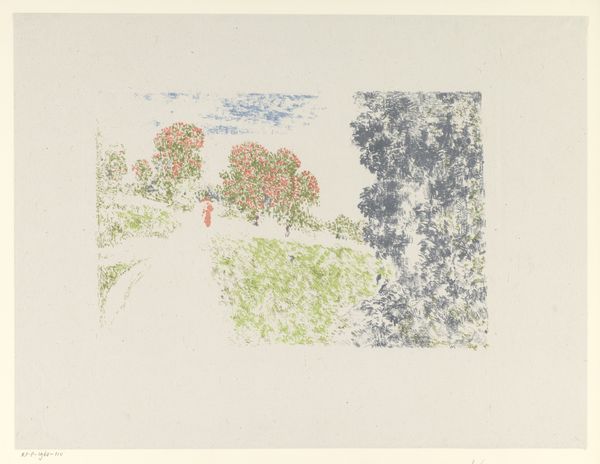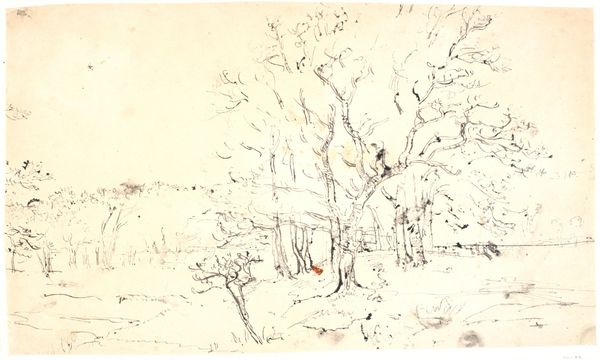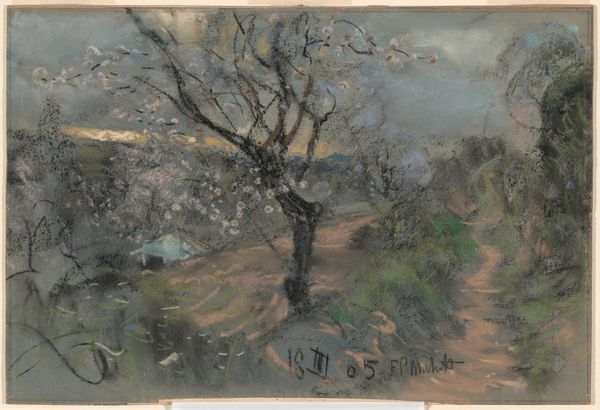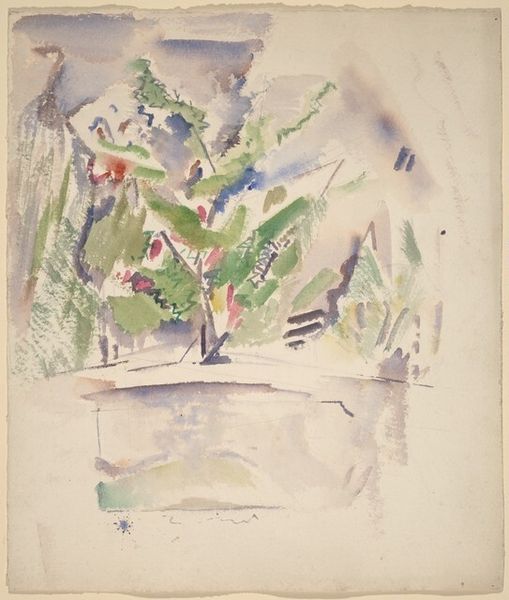
drawing, plein-air, watercolor
#
drawing
#
impressionism
#
plein-air
#
landscape
#
watercolor
#
watercolour illustration
#
watercolor
Dimensions: 278 mm (height) x 441 mm (width) (bladmaal)
This watercolour, sketched by Paul Cézanne, presents a seemingly simple motif: a fence and a tree. The fence, or "stakittet" in Danish, acts as a visual barrier, a boundary defining space. Fences appear throughout art history, from ancient Roman fortifications to the garden walls in Renaissance paintings, symbolizing order and exclusion, protection, and confinement. But notice how Cézanne’s fence is permeable, almost dissolving into the landscape. It is less a barrier, more a threshold, suggesting a transition from the known to the unknown. The tree, a universal symbol of life, growth, and connection between earth and sky, dominates the scene. Consider the ancient concept of the "axis mundi," the world tree, found in various mythologies. Cézanne's tree, rendered with delicate washes of color, embodies a similar symbolism. Its roots anchor it to the earthly realm, while its branches reach towards the heavens. This image invites us to reflect on the boundaries we construct, both physical and psychological, and the potential for growth and transcendence that lies beyond them.
Comments
No comments
Be the first to comment and join the conversation on the ultimate creative platform.
